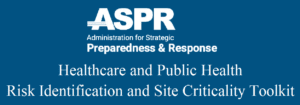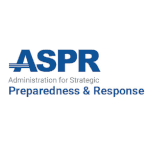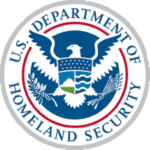Planning4Good Approach
Since the 9/11 attacks, the United States government has spent billions of dollars to develop, deploy, train and maintain a robust disaster readiness and business continuity system. Thousand of training opportunities and toolkits are available for use by anyone who needs to use these valuable business gems. But like any valuable gem, you have to know where to find them and how to integrate them appropriately. In addition to curating lists of the best FREE Disaster and Business Continuity training, resources, white papers and articles, The High Alert Institute is proud to present the method we use to integrate the free planning tools provided by the US government. We call this approach Planning4Good. As listed below, the method combines the resources of four government agencies in a continuous Risk Assessment, Planning, Training, and Evaluation process that takes less than 40 hours to complete each year. Below you will find not only the step-by-step method but links to all needed resources and exclusive access to our actual Risk Assessment and Disaster/Business Continuity plan as examples.
Planning4Good Step by Step

Individuals, Groups, and Businesses need to request unlimited access to the High Alert Institute training Library, Expert Resources, and Knowledgebase by completing an access request form.
Unlimited access members of the High alert Institute should complete the following training:

Although the HHS/ASPR RISC Toolkit was designed with healthcare facilities in mind, this locations based risk assessment tool provides users with an accurate relative risk for use and mitigation assessment for use in the DHS Business Continuity Suite software. Nonhealthcare facilities should select the “Federal Office” option for the facility description and answer any questions about “patients” using data about their customers or visitors. Animal welfare organizations, shelters, rescues, zoos and aquariums should answer questions about “patients” using data about animals in their onsite care.

Although the DHS Business Continuity Suite software is designed as a stand alone suite, the High Alert Institute has found the number one impediment for clients to develop a successful plan is identifying risk scenarios, assigning relative risk values to the scenarios identified, and determining the risk reduction for various mitigation strategies. The HHS/ASPR RISC Toolkit provides the data for these sections of the DHS Business Continuity Suite software. The Institute also recommends exporting the finished plan to a Word (.docx) document for grammar check, spelling check, and formatting before creating a PDF version or printing the plan to place in a binder. The Word document allows users to complete other required continuity plan forms from the Disaster/Business Continuity Plan.
Exercises are a key component of preparedness and business continuity, providing the opportunity to shape planning, assess and validate capabilities, and address areas for improvement. Homeland Security Exercise and Evaluation Program (HSEEP) provides a set of guiding principles for exercise and evaluation programs,
Homeland Security Exercise and Evaluation Program (HSEEP) provides a set of guiding principles for exercise and evaluation programs,
as well as a common approach to exercise program management, design and development, conduct, evaluation, and improvement planning. FEMA provides a simplified video training series on YouTube for businesses to develop their own training and exercise programs. Click on the HSEEP logo to access the FEMA HSEEP Video Training.
Now that you are trained, plan the best type of disaster exercise for your facility and add your exercise plan to the Disaster/Business Continuity Plan binder.
Test your Disaster/Business Continuity Plan using your Disaster exercise and review the successes and challenges. Remember, no plan completely survives its first encounter with the exercise field.
Update your plan after every exercise, event and annual review.
PLANNING4GOOD FAQ
Q: Why are IS-100.c, IS-200.c, IS-700.b and IS-800.d mandatory training for disaster readiness and continuity plan education?
An understanding of the overall emergency management system, disaster response, and the agencies and planning documents that define local, state and national disaster response is essential for anyone performing a risk assessment, planning for disaster/business continuity, or involved in disaster exercises. The ICS training defined by Homeland Presidential Directives provide that basic information and training.
All federal, state, territorial, local, tribal, private sector, and non-governmental personnel at the entry-level, first-line supervisor level, middle management level, and command and general staff level of emergency management operations must complete ICS-100 level training.
All federal, state, territorial, local, tribal, private sector, and non-governmental personnel at the first line supervisor level, middle management level, and command and general staff level of emergency management operations must complete ICS-200 level training.
All federal, state, territorial, local, tribal, private sector, and non-governmental personnel at the first line supervisor level, middle management level, and command and general staff level of emergency management operations must complete NIMS (ICS-700) and NRF (ICS-800) level training.
Q: I am responsible for planning and executing our facility disaster exercise. Do I need to be HSEEP certified?
The Homeland Security Exercise Evaluation Program (HSEEP) Certification is designed for those training, exercise, and emergency management professionals responsible for designing, planning, conducting, evaluating, and reviewing disaster exercises for critical infrastructure industries, critical services industries, governments, interagency cooperatives, and communities. The training is comprehensive and invaluable, however, most businesses do not require an HSEEP-certified exercise professional to design an effective disaster exercise program. Most businesses benefit more from repeated exercises throughout the year that result in incremental improvement than a large-scale complex exercise. If your business wants to be part of a Disaster Exercise performed by HSEEP-certified professionals, contact your local office of emergency management and volunteer to participate in your community’s disaster exercises.
High Alert Institute
4800 Ben Hill Trail
Lake Wales, FL 33898
Office: 863.696.8090
FAX: 407.434.0804
Info@HighAlertInstitute.org
Privacy Policy
Cookie Policy
Terms of Use
Disclaimers
Get Your Data
Shipping Policy
Message Us
Transparency
Registrations
Do Not Sell Info
Return Policy
A COPY OF THE OFFICIAL REGISTRATION AND FINANCIAL INFORMATION MAY BE OBTAINED FROM THE DIVISION OF CONSUMER SERVICES BY CALLING TOLL-FREE, WITHIN THE STATE, 1-800-435-7352 (800-HELP-FLA), OR VISITING www.FloridaConsumerHelp.com. REGISTRATION DOES NOT IMPLY ENDORSEMENT, APPROVAL, OR RECOMMENDATION BY THE STATE. Florida Registration #CH68959
REGISTRATION WITH A STATE AGENCY DOES NOT CONSTITUTE OR IMPLY ENDORSEMENT, APPROVAL OR RECOMMENDATION BY THAT STATE.











